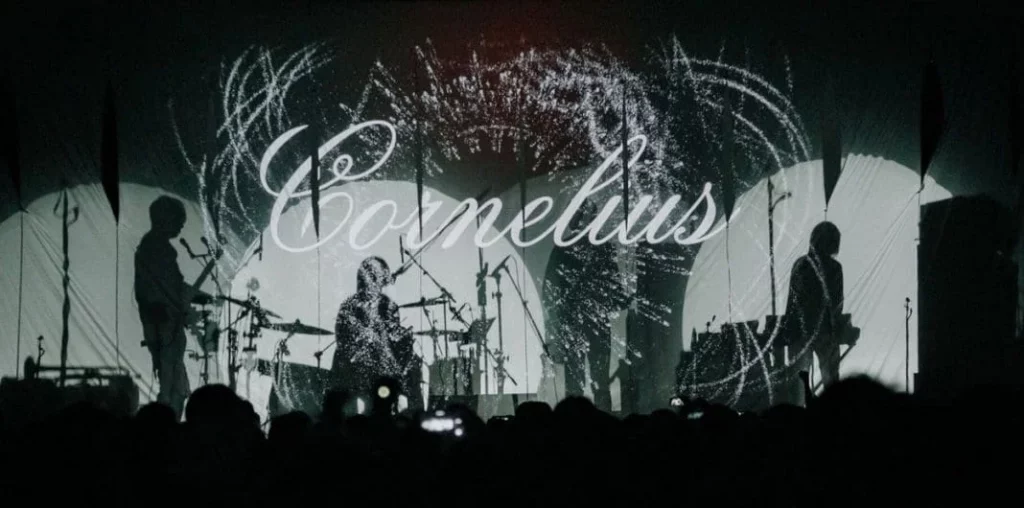
On the 3rd of September, I was able for the very first time to attend the live show of Cornelius in Paradiso Amsterdam. Since I had booked the ticket exactly one year ago, my excitement had been building up and when I finally saw the performance live, I was drowned in sheer thrill and satisfaction which jointly exceeded what I am able to describe.
Cornelius, born in Tokyo in 1969 with the birth name Keigo Oyamada, is a Japanese musician and producer, who debuted as a member of the fundamental band of Shibuya-Kei, Flipper’s Guitar in 1989. He started performing as Cornelius in 1993 and his music style gradually evolved from guitar-centered indie-pop to encompassing electronic, experimental, and ambient-charged sounds. The 2001 album “Point” was groundbreaking in his solo career as he made his music with the digital audio workstation Pro Tools, which turned his works into multimedia art incorporating video art and sound design for pictures. Cornelius created music videos with precisely synchronized sound and moving images, which are both visually and acoustically pleasing. In the live performance, he played against the backdrop of those music videos that projected directly on the band members too, making the whole stage set a multimedia representation.
In the song “Point Of View Point”, the sound was visualized using Pro Tools to consciously make the music construction according to points and placement. In audio, locations such as “left”, “right”, and “up” are called out by Cornelius while being hard-panned in the mix to those locations, giving a fully 3D headphone experience with something tangible and locatable, placing the listener into a genuine sonic world. But, in the music video, the points of image change do not align with the cue of locations. Instead, they were synchronized with the tempo of the guitar and the beat of the drum. In this way, the footage serves as a visual extension of the satisfying sound effect of the melody, emphasizing the pleasant lingering of the guitar, and the exquisite rhythm of the beat. Even if you do not have a professional sound system, or even just watch this video on your phone, it still functions well as the moving images compensate for the loss of precise sound resources, offering an alternative to the pleasing experience.
A sweet spot of the video (1’38”) is when the sound is sucked away for 10 seconds and then returns. It shows the view of driving into a warmly lighted tunnel, which metaphorically implies the sound is traveling through a channel. The fast-forward driving footage is so accurately cut according to the running of the two bars in the music, and it somehow reminded me of “2001: Space Odyssey” where Bowman travels through the space vortex. It is indeed a perfect visualization of the sound.
Cornelius also elaborately collaborated with Japanese video artist Koichiro Tsujikawa in his albums Point (2001), Sensuous (2006), and Mellow Wave (2017), creating award-claiming music videos such as “Drop – Do It Again”. The digital multi-media presentation in their works enhances the magnificent experience of the live concert.
I consider myself extremely lucky to have been able to witness this intriguing and inspiring digital spectacle in person.
References:
“Corneliusが語る、レコーディング環境30年の変遷。AI時代でも「自分にフィットするやり方を選ぶだけ」 | CINRA,” n.d. link.
A beginner’s guide: Shibuya Kei. (n.d.). DrownedInSound. link


Recent Comments